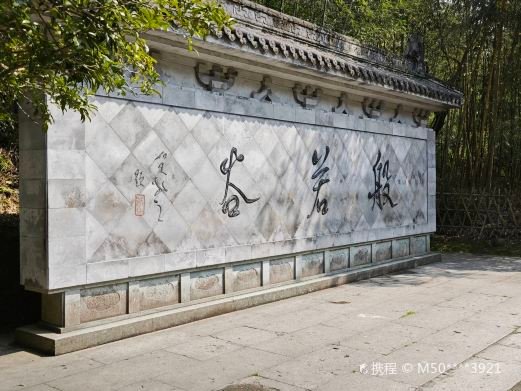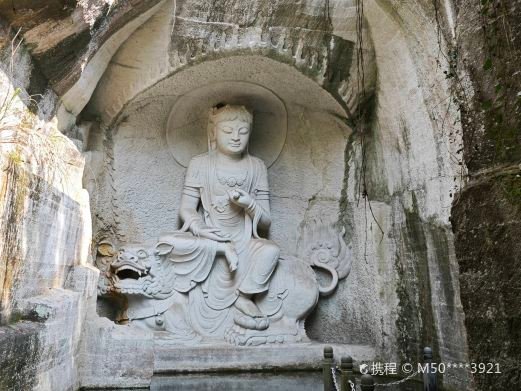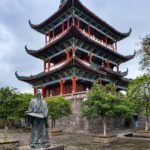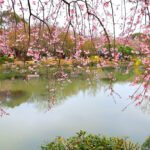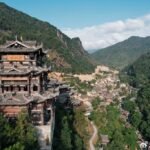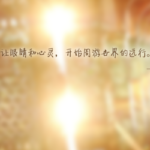Prajna Valley was built in February 2001. It was originally a quarry in the Ming Dynasty. The layout of the scenic spot is wonderful and the meaning is profound. It is a model work of contemporary new scenic spots and has the reputations of ‘Jiangnan Dunhuang’ and ‘Underground Buddhist Kingdom’. Prajna (bore) is a transliteration of Sanskrit, which means great wisdom. The scenic name ‘Prajna Valley’ was inscribed by He Jingzhi. The white marble sutra pillar is 9 meters high, and the Heart Sutra of Prajna Paramita is engraved on the pillar. In front of it, a waterfall falls from the sky with a drop of about 50 meters and is divided into seven levels. The number of ‘seven levels’ exactly matches the Buddhist term ‘seven-story pagoda’. There is a statue of the birth of Sakyamuni Buddha in the scenic spot. Standing on a lotus flower, with one finger pointing to the sky and the other pointing to the ground, it implies ‘Among heaven and earth, I am the only one who is honored’. The statue of the birth of Sakyamuni symbolizes the origin of Buddhism. On the right is the line carving pattern of Sakyamuni attaining enlightenment under the bodhi tree. The statue of attaining enlightenment symbolizes the development of Buddhism in India. Walking up along the steps, the rock gully and steep cliff imply the hardships of those who spread Buddhist culture to our country. After passing the second-level waterfall and going down the steps, in front is a stone wall relief statue 12 meters high and 25 meters wide. The picture scene shows a large number of eminent monks and celebrities gathering in Shanzhong (now Xinchang) in the Southern Dynasties to study Buddhist Prajna. There are also allusions such as Tan Guang opening the mountain, the legacy of Zhi Dun, the founding of Prajna, the sacred traces of three lives, and the passing away of the wise. And the eighteen celebrities such as Wang Xizhi and Sun Chuo who traveled and stayed in Xinchang mentioned in Bai Juyi’s ‘Records of Wozhou Mountain Zen Temple’. This is a huge historical scroll of the Sinicization of Buddhism, indicating the foothold of Buddhism in China and also reflecting the status of Xinchang in the history of Buddhism. The waterfalls fall layer by layer,激起巨大的轰鸣声, implying that China’s traditional culture and Indian Buddhism have encompassed Buddhism in the agitation and later become a profound Chinese culture. There is a stone chamber in the middle of the tunnel called ‘Brilliant World’. In the middle are two Vairocana Buddhas, and there are mirrors on all sides, resplendent and magnificent. ‘Brilliant World’ indicates the flourishing of Buddhism in China. Out of the tunnel, there is a 20-meter-high Avalokitesvara statue with a carp head and Manjusri Bodhisattva. It is said that in the future, Samantabhadra Bodhisattva and Ksitigarbha Bodhisattva will also be carved around. The four bodhisattvas symbolize the popularity of Buddhism in our country.
The opening hours are from 06:00 to 17:30 from May 1st to September 30th; from 06:00 to 17:00 from October 1st to April 30th.
